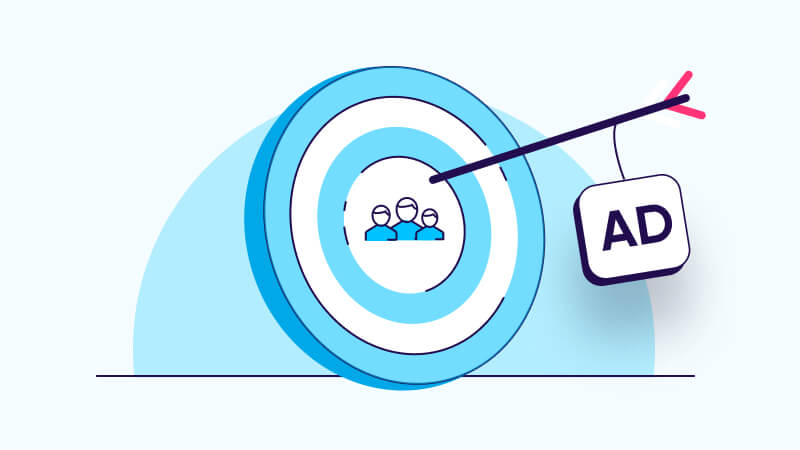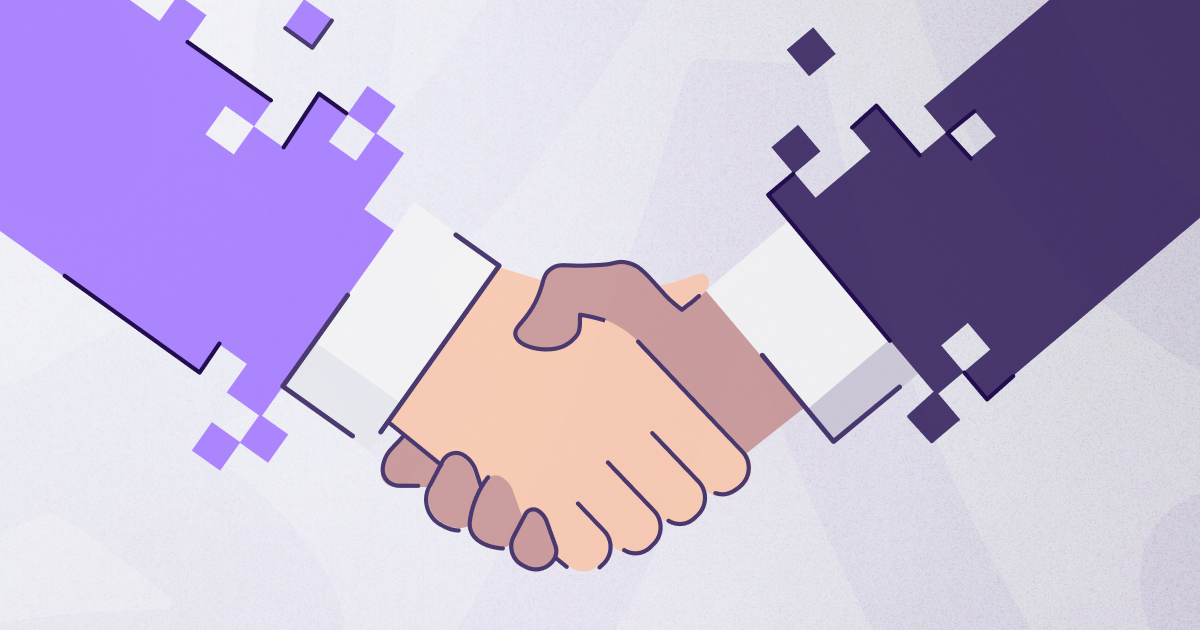
Programmatic guaranteed

A type of programmatic direct deal that involves one-on-one contact between a publisher (seller) and an advertiser (buyer). The publisher agrees to offer a fixed number of impressions while the advertiser commits to a pre-negotiated price to procure them.
What is programmatic guaranteed?
A one-on-one deal arrangement that lets advertisers buy inventory directly from publishers.
The publisher delivers a fixed volume of impressions, and the advertiser agrees to pay a fixed price. Once the deal is finalized, the publisher reserves inventory for a specific advertiser.
While programmatic advertising has existed for decades, programmatic guaranteed is a relatively new concept, which evolved in 2015 after advertisers and publishers were frustrated with the limitations of programmatic deals — such as real-time bidding and private auctions.
How does programmatic guaranteed work?
Both advertisers and publishers can initiate a programmatic guaranteed deal. Publishers can use Google Ad Manager to create a proposal and send it to suitable advertisers, and then interested advertisers can inspect the inventory and evaluate the proposal before making the final decision.
Conversely, advertisers can analyze different publishers and contact them to negotiate a programmatic guaranteed deal. Once the deal is finalized, and the publisher agrees to reserve inventory for that particular advertiser, the publisher assigns a deal ID to the advertiser — allowing them to display their ads.
With programmatic guaranteed, every aspect of a campaign is set in stone. These include:
- Impressions
- Placement
- Prices
- Dates
A programmatic direct deal requires the advertiser-side agency to sync its data management platform (DMP) with the publisher’s DMP, and lets the agency analyze the publisher’s inventory and audience before planning the campaign.
Top 3 benefits of programmatic guaranteed for publishers
A programmatic guaranteed deal brings various advantages for both advertisers and publishers, among which are:
1 – Amplified revenue
With programmatic guaranteed, publishers have the freedom to charge a higher price for premium inventory. Unlike an open auction, their role isn’t restricted to setting a floor price for their inventory.

Instead, they can directly negotiate the price with interested advertisers, which eliminates the risk of unfulfilled inventory. Besides improving ad revenue, it gives publishers more control over inventory prices, creating a predictable revenue stream.
2 – Improved brand safety
Direct communication with an advertiser helps publishers take a closer look at the campaign. They have a clear idea of the visuals which will be displayed and which products will be advertised on their websites / apps.
3 – Enhanced user engagement and experience
Programmatic guaranteed helps publishers display relevant ads that’ll resonate with their audience, and minimizes the risk of disrupting the user experience with irrelevant ads. That, in turn, improves audience engagement, preserves their brand image, and may also help in reducing the cost per engagement (CPE).
Top 5 benefits of programmatic guaranteed for advertisers
The benefits of programmatic guaranteed advertising aren’t restricted to publishers. Advertisers get to enjoy the following advantages:
1 – Better control
A programmatic guaranteed deal improves transparency and trust between the advertiser and publisher. Advertisers can gauge specific details, such as the number of impressions and CPM — before implementing a campaign.
This minimizes the need to worry about hidden costs and helps them plan more efficient ad campaigns.
2 – Improved targeting
The best part is that advertisers can assess a publisher’s available inventory and audience to determine whether it meets their needs.

That gives them the power to choose publishers who’ll help them reach their target demographic, and give advertisers more control over how, when, and where their ads are displayed.
3 – Enhanced security
Direct communication between the publisher and advertiser in a programmatic guaranteed deal minimizes the risk of ad fraud. The absence of a third-party, such as an ad network, increases the likelihood of getting impressions and clicks from genuine users.
4 – Increased efficiency
With programmatic guaranteed, advertisers don’t have to participate in auctions or compete with other buyers. Instead, they can focus on making their campaigns more attractive and relevant to their target audience.
Programmatic guaranteed even automates routine tasks, such as issuing insertion orders and exchanging tags, which makes the process more efficient.
Lastly, it eliminates manual tasks from the ad buying process — such as copying tags and troubleshooting discrepancies.
5 – Better ROI
The ability to check a publisher’s inventory and control ad placement improves campaign performance, which helps advertisers achieve a higher return on their ad spending (ROAS).
Disadvantages of programmatic guaranteed
A programmatic guaranteed deal creates a win-win situation for advertisers and publishers. However, it also comes with the following shortcomings:
For publishers
The most significant drawback of programmatic guaranteed is its relatively higher barrier to entry, which means new publishers with a small audience and limited connections may not benefit from it.
Moreover, it requires publishers to hire a dedicated team that’ll segregate their inventory and communicate with potential buyers. And, they also need to acquire enough technical knowledge about setting a programmatic guaranteed deal and tracking their profits.
For advertisers
Advertisers should expect to pay a higher price while buying inventory through a programmatic guaranteed deal. Additionally, they don’t have a benchmark, such as a floor price or other bids, to understand whether the publisher is asking for a fair price.
Moreover, once the deal is finalized, advertisers are obligated to buy the available inventory, which emphasizes the importance of evaluating the publisher to ensure their reliability.
Programmatic guaranteed vs. Private marketplace (PMP)

Both programmatic guaranteed and private marketplace are types of programmatic advertising. That means the process of buying inventory, targeting the right audience, and displaying ads — are fully automated.
However, there’s a fundamental difference between the two models.
Unlike programmatic guaranteed, a private marketplace deal doesn’t result in a one-on-one agreement between the advertiser and publisher. Instead, it’s an invitation-only auction where a publisher invites a selected group of buyers to bid for available inventory.
The publisher sets a floor price before the auction starts, and the advertiser with the highest bid wins the auction and buys the inventory, also known as a private auction.
It’s worth noting that PMP doesn’t require publishers to reserve inventory for specific advertisers nor do they have to guarantee a specific number of impressions. This makes it ideal for new or small publishers who are yet to establish strong connections with advertisers.
Programmatic guaranteed vs. Preferred deals

Programmatic direct is a type of programmatic advertising that involves one-on-one communication between a buyer and a seller. It can be categorized into two types:
- Preferred deals
- Programmatic guaranteed
While programmatic guaranteed deals promise a fixed volume of impressions and CPM, the same isn’t true for preferred deals. Instead, a preferred deal provides advertisers with preferential access to a publisher’s premium inventory at a pre-negotiated CPM.
The primary difference is that in a preferred deal, the buyer can choose to pass on the offer. In such a scenario, the publisher can sell their inventory in a private or an open auction. A programmatic guaranteed deal, on the other hand, doesn’t offer that kind of flexibility.
Lastly, campaign specifics such as dates, ad placement, and impressions — aren’t pre-defined in a preferred deal.
Should you go with programmatic guaranteed?

As an advertiser, you need to carefully analyze the key benefits and limitations of a programmatic guaranteed deal before opting for it. The most important bit here is to inspect the publisher’s inventory and audience to understand whether it fits your requirements.
Typically, programmatic guaranteed deals are suitable for big advertisers who are looking for specific ad placement and impressions in a particular date range. Keep in mind that such campaigns will involve a higher upfront investment, and that you won’t have the option to back out after closing the deal.
Key takeaways
- Programmatic guaranteed is a type of programmatic direct deal where a publisher reserves inventory for an advertiser. The publisher commits a specific volume of impressions, and the advertiser promises to pay a fixed, pre-negotiated price for them.
- Benefits of programmatic guaranteed for publishers include:
- More revenue
- Improved efficiency
- Better brand safety
- Benefits of programmatic guaranteed for advertisers include:
- Increased transparency and trust
- Better audience targeting
- Enhanced security (no ad fraud)
- Improved ad performance
- Higher ROI
- Programmatic guaranteed deals come at a higher price point, which makes it crucial to analyze a publisher’s credibility and evaluate the available inventory before negotiating a deal, which in turn, helps advertisers make the most of their programmatic guaranteed deals.



